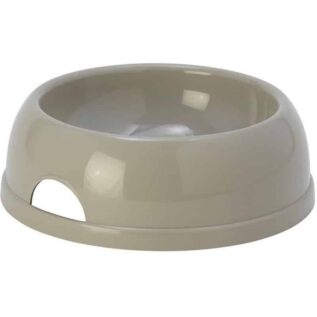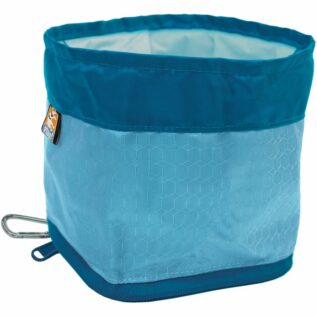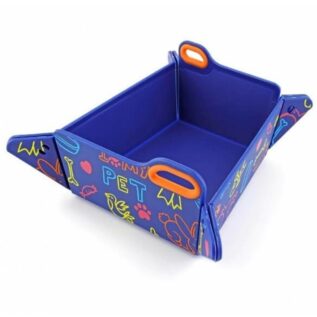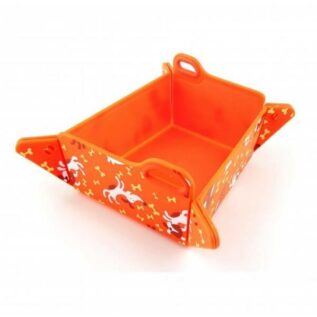How to Choose Dog Bowls
Introduction
Dog bowls are essential items for pet owners to ensure their furry friends are well-fed and hydrated. However, choosing the right dog bowl goes beyond just functionality. It involves considering various factors such as material, size, design, and special needs. In this article, we will guide you through the process of selecting the perfect dog bowl for your canine companion.
Importance of Choosing the Right Dog Bowl
Having the right dog bowl is crucial for your pet's well-being. It not only affects their eating habits but also their overall health. The right bowl can prevent issues like neck strain, indigestion, and allergies. By providing a suitable dog bowl, you can ensure your dog eats comfortably and stays healthy.
Factors to Consider When Choosing Dog Bowls
Material of Dog Bowls
The material of the dog bowl plays a significant role in its durability, safety, and ease of cleaning. Common options include stainless steel, ceramic, plastic, and silicone. Stainless steel bowls are sturdy, resistant to bacteria, and dishwasher-safe. Ceramic bowls are aesthetically pleasing but may be prone to breakage. Plastic bowls are lightweight and affordable but can harbor bacteria over time. Silicone bowls are collapsible and portable, making them suitable for travel.
Size and Capacity
Choosing the right size and capacity is important to ensure your dog has enough food and water without feeling cramped or overwhelmed. Consider your dog's breed, age, and appetite when determining the appropriate size. A general rule is to select a bowl that can hold enough food for one meal or one day, depending on your feeding routine.
Design and Style
While aesthetics may not be the primary concern, selecting a bowl that complements your home decor can be a bonus. However, focus on functionality over style. Look for bowls with a wide base to prevent tipping and spilling. Additionally, consider bowls with a non-slip base to keep them in place, especially for enthusiastic eaters.
Elevated Dog Bowls
Elevated dog bowls are raised off the ground and provide several benefits. They promote better posture, reduce strain on the neck and joints, and aid digestion. Elevated bowls are particularly useful for large and senior dogs, as well as those with certain medical conditions.
Non-Slip Base
To avoid messy spills and slipping, opt for a dog bowl with a non-slip base. This feature prevents your dog from pushing the bowl around while eating or drinking. It ensures a more stable feeding experience and minimizes the mess created during mealtime.
Ease of Cleaning
Keeping your dog's bowl clean is essential to maintain proper hygiene. Look for bowls that are easy to clean, preferably dishwasher-safe. Stainless steel and ceramic bowls are typically the easiest to sanitize, whereas plastic bowls may become scratched and retain bacteria over time.
Cost
Consider your budget when selecting a dog bowl. While it's important to invest in a high-quality bowl, there are options available at various price points. Stainless steel bowls are often a cost-effective and durable choice, while ceramic and specialized bowls may be pricier.
Specific Bowls for Special Needs
Some dogs may have specific needs that require specialized bowls. For example:
- Slow Feeder Bowls: These bowls feature ridges or obstacles inside to slow down fast eaters. They promote healthier eating habits and help prevent issues like bloating and indigestion.
- Raised Bowls for Arthritis: Dogs with arthritis or joint problems may benefit from elevated bowls that reduce the strain on their neck and joints during mealtime.
- Anti-Gulping Bowls: Designed for dogs that tend to gulp their food, these bowls have dividers or obstructions that encourage slower eating and better digestion.
- Interactive Dog Bowls: These bowls are designed to stimulate your dog mentally while they eat. They often have compartments or puzzles that require the dog to work for their food, providing mental stimulation and slowing down eating.
- Travel-Friendly Bowls: If you often travel with your dog, consider collapsible or portable bowls. These bowls are lightweight, easy to pack, and convenient for on-the-go feeding. They allow you to provide food and water to your dog wherever you are, ensuring they stay nourished during your adventures.
Environmental Considerations
When choosing a dog bowl, consider the environmental impact of the materials used. Opt for bowls made from eco-friendly materials or those that are biodegradable. Avoid bowls with harmful chemicals or plastics that may contribute to pollution.
Conclusion
Choosing the right dog bowl is essential for your pet's health, comfort, and overall well-being. Consider factors such as material, size, design, and special needs when making your selection. Ensure the bowl is easy to clean and fits within your budget. By selecting the perfect dog bowl, you can provide your furry friend with a comfortable and enjoyable dining experience.
Frequently Asked Questions
What is the best material for a dog bowl?
Stainless steel is often considered the best material for dog bowls due to its durability, resistance to bacteria, and ease of cleaning.
How do I determine the right size of the dog bowl?
Consider your dog's breed, age, and appetite when selecting the size. It should be spacious enough to hold a meal or a day's worth of food.
Are elevated dog bowls necessary?
Elevated dog bowls are not necessary for all dogs but can benefit those with joint issues, arthritis, or larger breeds to promote better posture and digestion.
Can I put a dog bowl in the dishwasher?
Stainless steel and ceramic bowls are generally dishwasher-safe. However, always refer to the manufacturer's instructions for specific care guidelines.
Are slow-feeder bowls suitable for all dogs?
Slow-feeder bowls are beneficial for dogs that tend to eat too quickly. However, monitor your dog's eating habits and consult with a veterinarian if you have concerns.


































